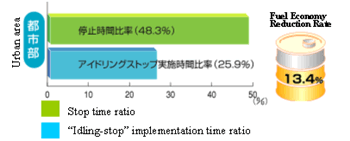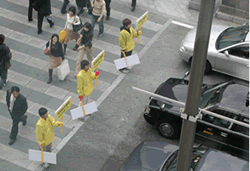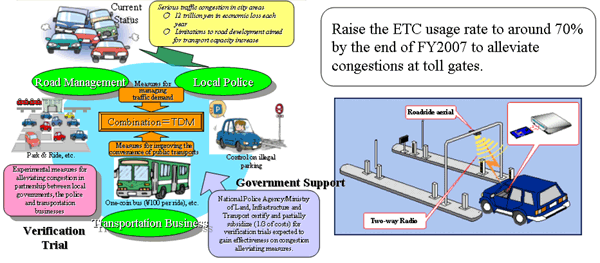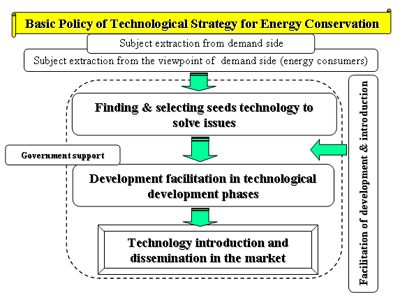Promotion of Cars with the"Idling-Stop" System
- Idle-free driving can improve fuel economy by approx.10%. Even greater energy conservation effect is expected in city areas, where idling frequency is high.
- Partial subsidy for the purchase of cars equipped with the "idling-stop" system was introduced in FY2003.
- Promotion campaigns for the "idling-stop" systems are held in the forms of PR events, etc.
Effects of the driving experiments by “idling-stop” cars
PR activities
| Nationwide (3719km)...5.8% on average Or 13.4% in city areas [The stop & "idling-stop" implementation time ratio in city area] |


Idling-free promotional event (Osaka)





